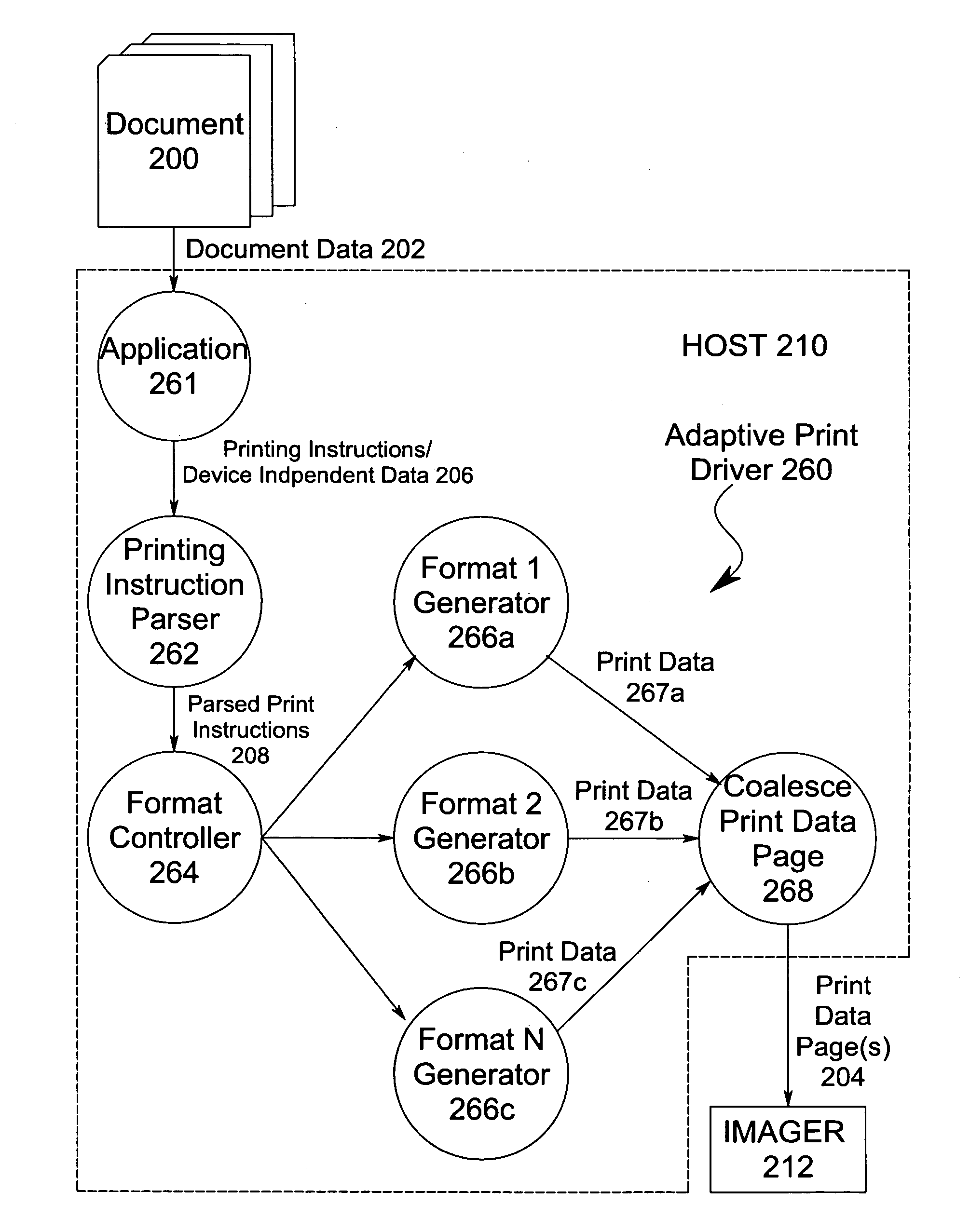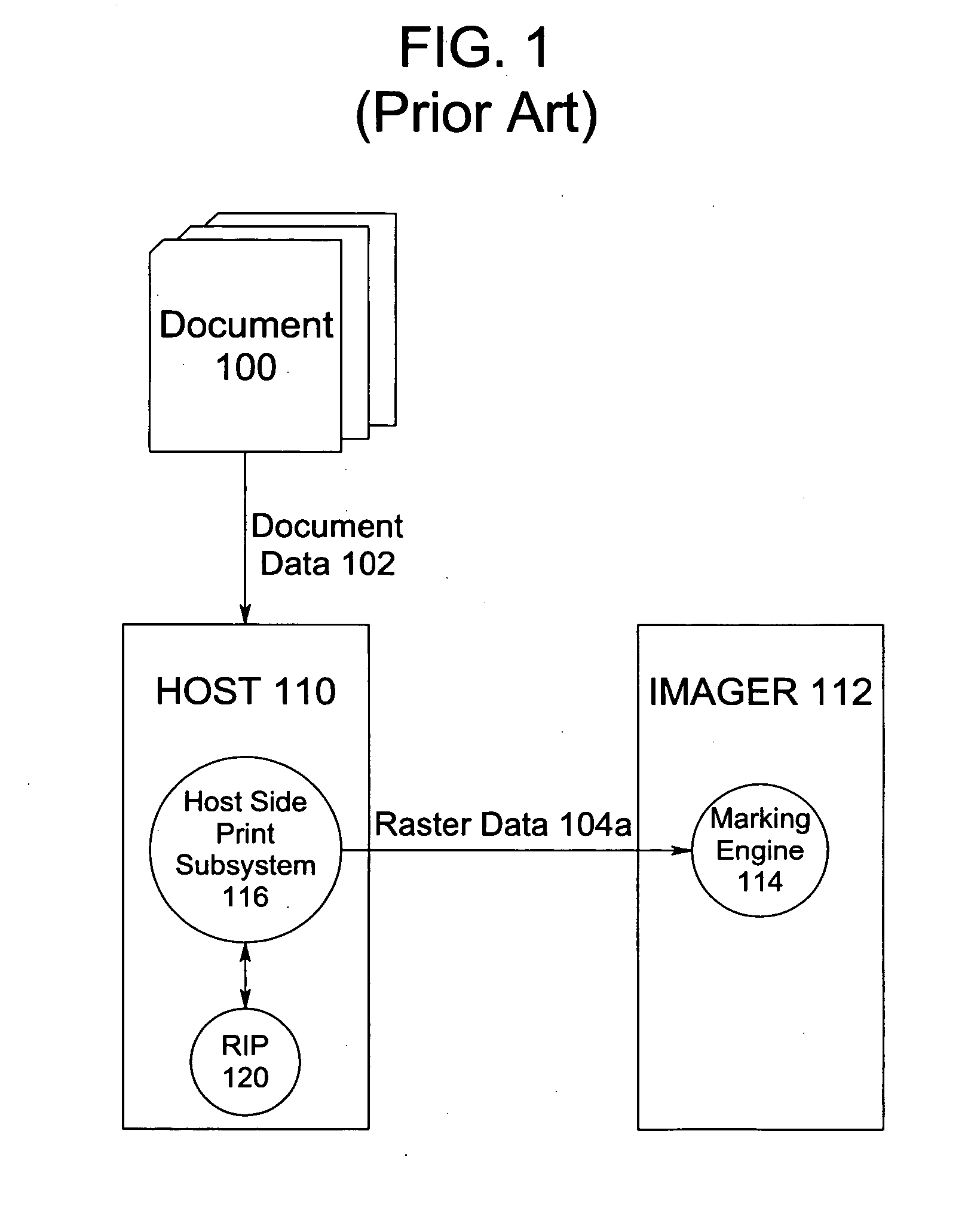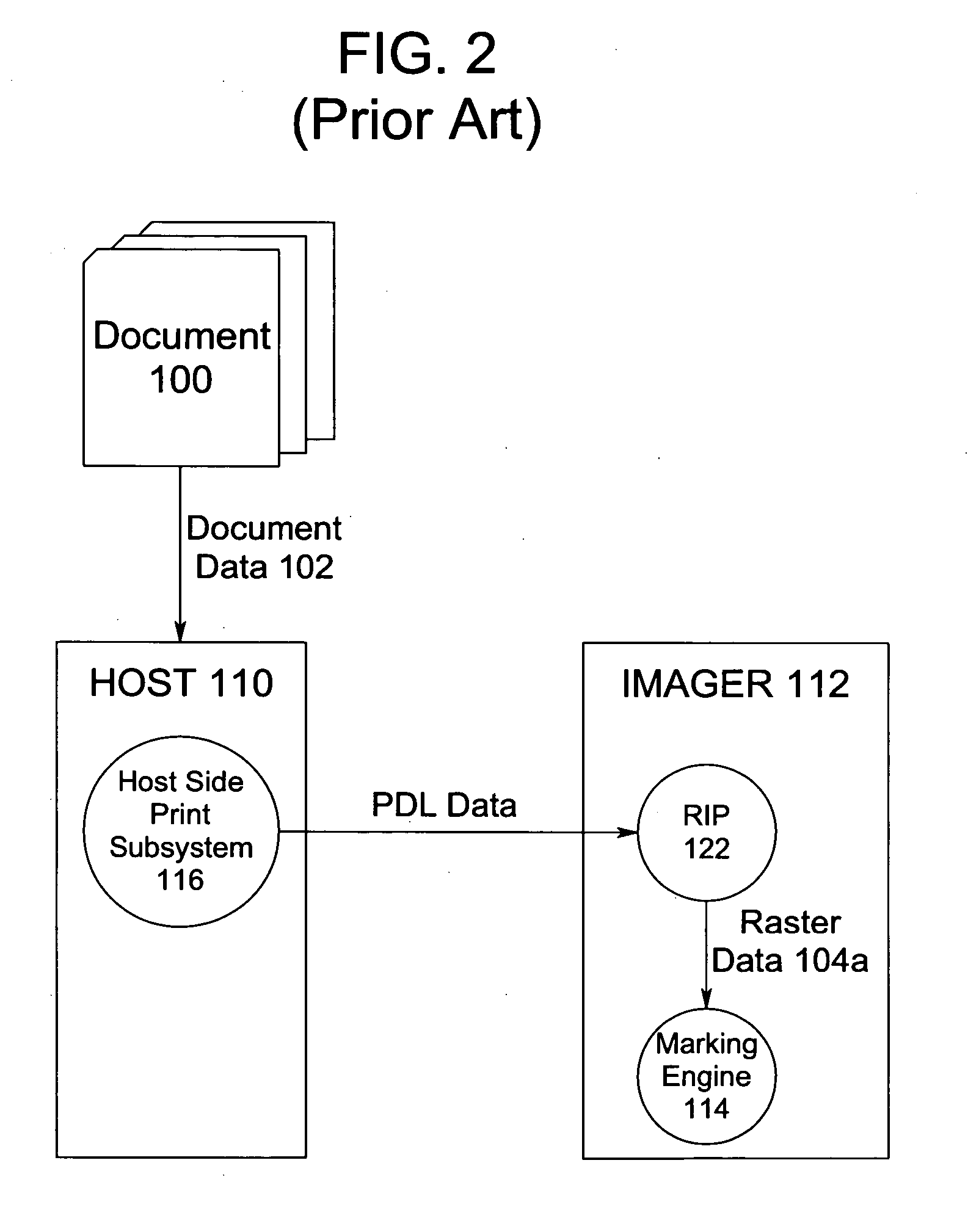Adaptive driver for choosing hybrid raster and PDL format output
a driver and hybrid technology, applied in the field of print drivers, can solve the problems of rasterization being a resource-intensive process, slowing down the connected device on which it is being performed, and affecting the output quality of the device, and achieve the effect of optimal load balan
- Summary
- Abstract
- Description
- Claims
- Application Information
AI Technical Summary
Benefits of technology
Problems solved by technology
Method used
Image
Examples
Embodiment Construction
[0033] The present invention is directed to an adaptive print driver 260 (FIG. 6) for dynamically choosing hybrid raster and PDL format output. Using the adaptive print driver 260, the present invention provides an effective system and method of dynamically partially rasterizing document data 202 on a host 210 and outputting the result as print data pages 204. The print data pages 204 are then transmitted to an imager 212 where the remainder of the rasterization takes place. An optimal load balance between the rasterization taking place on the host 210 and the imager 212 is achieved using a data format determination analysis process 270 (FIG. 7) for choosing print data formats. The analysis process 270 preferably takes into consideration the performance capabilities 272 of the host 210 and imager 212, the load capacities 274 of the host 210 and imager 212, and the complexity 276 of the document 200 (e.g. the document data 202 and / or device independent data 206). If the imager's perf...
PUM
 Login to View More
Login to View More Abstract
Description
Claims
Application Information
 Login to View More
Login to View More - R&D
- Intellectual Property
- Life Sciences
- Materials
- Tech Scout
- Unparalleled Data Quality
- Higher Quality Content
- 60% Fewer Hallucinations
Browse by: Latest US Patents, China's latest patents, Technical Efficacy Thesaurus, Application Domain, Technology Topic, Popular Technical Reports.
© 2025 PatSnap. All rights reserved.Legal|Privacy policy|Modern Slavery Act Transparency Statement|Sitemap|About US| Contact US: help@patsnap.com



